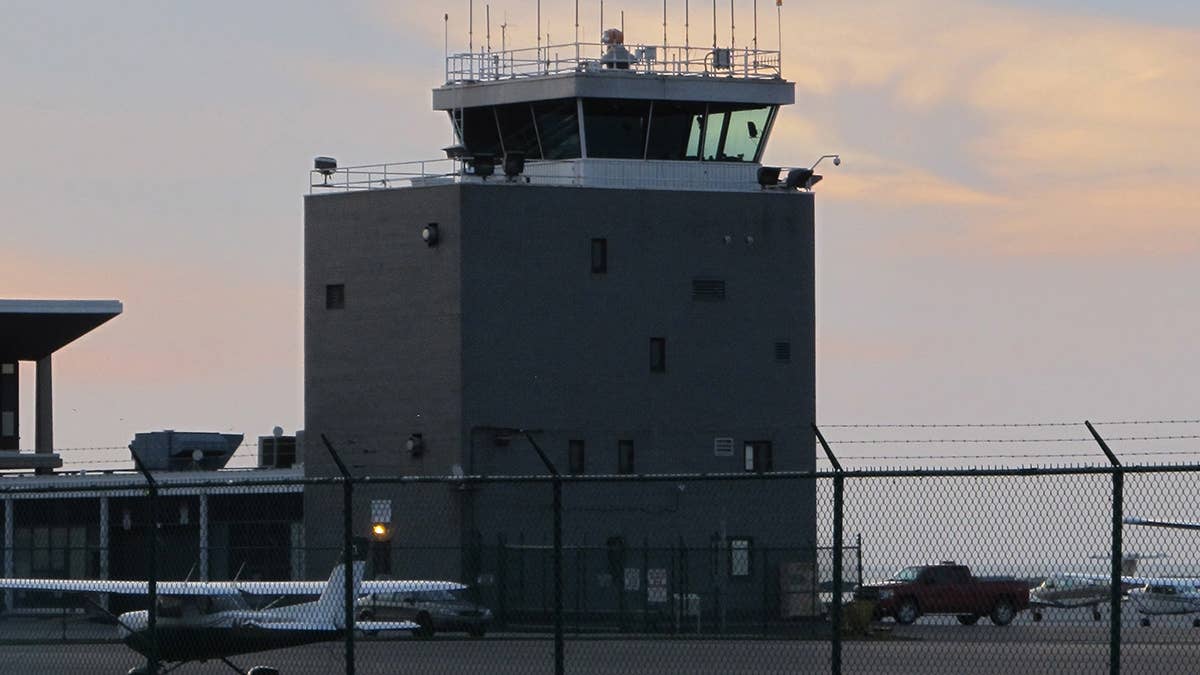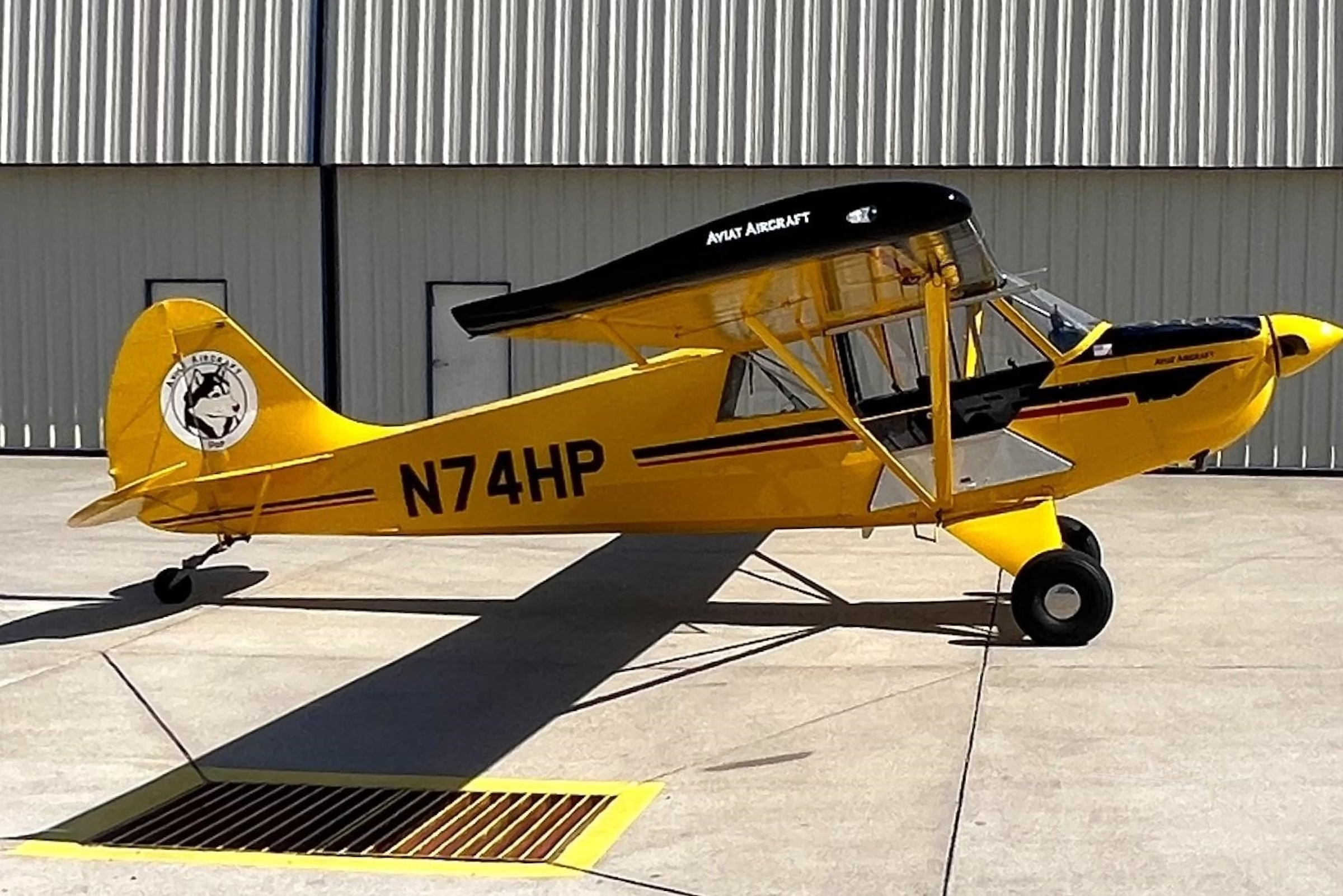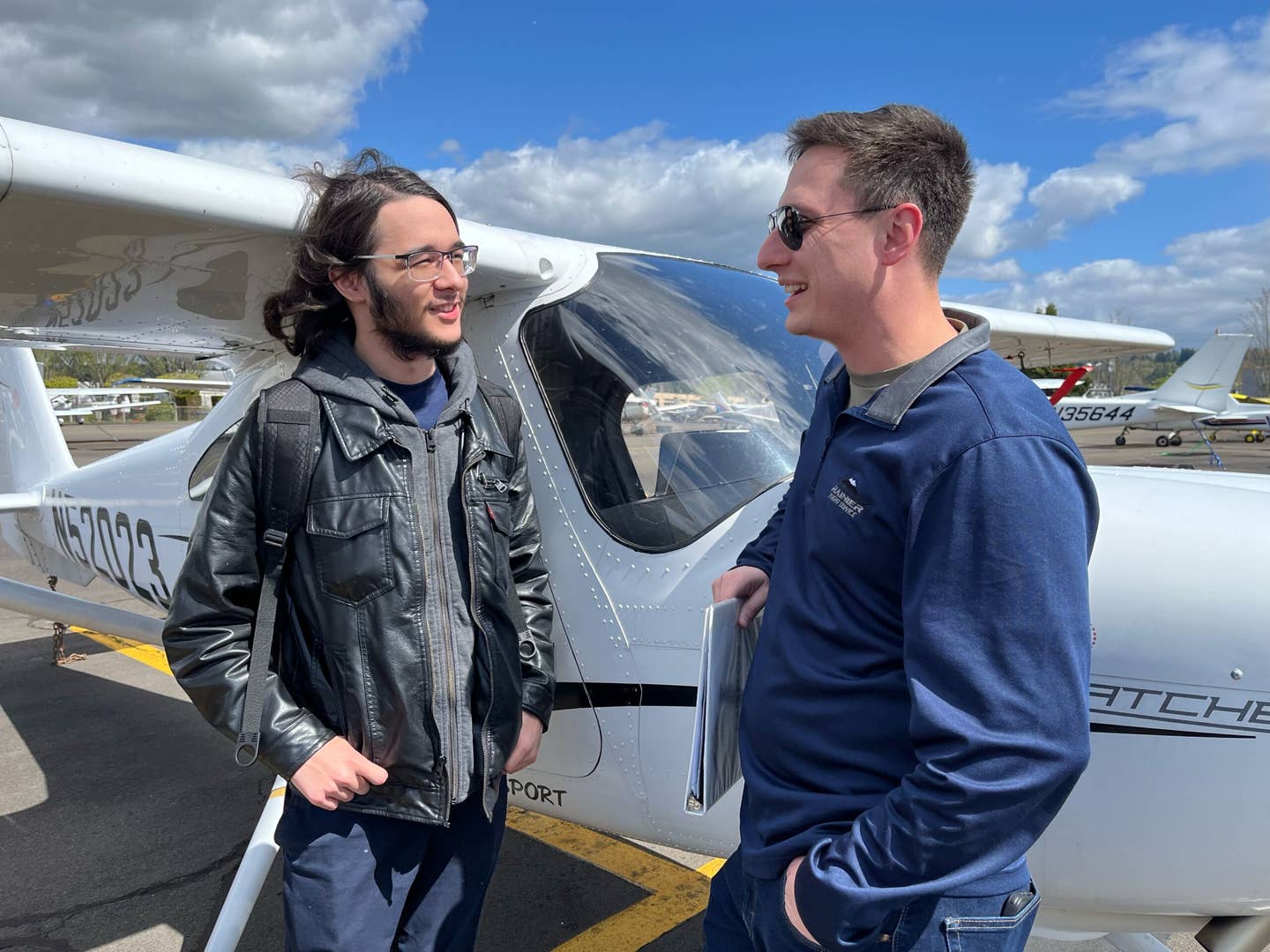Into the Dark of Spatial Disorientation
Do you believe your backside or your lyin’ eyes?

The tower at Cleveland’s Burke Lakefront Airport (KBKL). aeroplanepics0112/Wikimedia Commons
On a November night in 1995, a Beech Baron 58 departed from Runway 24 at Cleveland’s Burke Lakefront Airport (KBKL), on the south shore of Lake Erie. It was bound for Raleigh, North Carolina, with five aboard. The Baron climbed to 200 feet above the end of the runway and began a right turn. The tower controller, who had been watching the airplane, turned away. A couple of minutes later, he had a call from a city operations office asking whether he could see smoke out on the lake.
The Baron had hit the water about 6 miles from the airport. The Coast Guard rescued two surviving passengers; the 1,000-hour instrument-rated pilot, 47, and two other passengers perished. The surviving passengers recalled no problem with the airplane or the pilot before impact.
A Gulfstream pilot who took off shortly after the Baron related to National Transportation Safety Board investigators that there was no visible horizon over the lake, and that he would become disoriented if he took his eyes off his instruments to look out. The NTSB’s report faulted the Baron’s pilot for his failure to maintain a positive rate of climb after takeoff. It made no mention of spatial disorientation, but did cite the lack of visual references over the water as a factor.
On a clear, moonlit evening in January 2008, a Baron 58 left KBKL for Niagara Falls. The pilot, 68, an 18,000-hour ATP and CFI–I with a stack of ratings, was alone. He took off from Runway 24 with instructions to turn right on course. The tower controller watched as the Baron climbed, banked to the right and then descended in a steepening arc and plunged into the lake. A fire burned briefly on the water.
The airplane and the remains of the pilot were recovered. Neither the engines themselves nor the onboard engine monitor gave any indication of trouble; both engines were developing high power until the recording stopped. The flight control system appeared to have been intact up to impact.
Although the pilot had reported using only a cholesterol-regulating drug with no side effects relevant to flying, post-mortem toxicology found two painkillers and a heart-disease-related drug in his blood and urine. The pilot’s personal medical records revealed that he suffered from mild diabetes, back pain, hypertension, gastric reflux and various cardiac problems. The NTSB did not say that any of these conditions or medications had anything to do with his flying into the lake, but it seemed to suggest, by enumerating them, that they could have.
This time, the NTSB did not fault the pilot for “improper IFR procedure,” as it had in the previous accident. Instead, it said he had become spatially disoriented as he turned out over the dark lake and away from the moon and the lights of Cleveland. Among the positional illusions that occur in the absence of visual references the NTSB cited the “somatogravic illusion,” the impression of leaning backward — and therefore of being in a climbing attitude — that is produced when forward acceleration presses you against your seat back.
The available evidence in the two accidents was essentially identical. Shifting the blame from the pilot’s actions to an external cause — spatial disorientation — might reflect a cultural shift at the NTSB, but changes nothing.
In December 2016, an hour before midnight, a Cessna Citation CJ4 took off from Runway 24 at KBKL with instructions to turn right to 330 and maintain 2,000 feet.
You know what happened next.
The pilot, in this case, was 45 years old and had 1,200 hours. He had acquired his CJ4 single-pilot type rating just three weeks before the accident, but had previously owned a Cessna 510 Mustang for two years and logged 370 hours in it. As is customary in single-pilot operations, the pilot had been trained to engage the autopilot shortly after takeoff.
The NTSB’s theory of the accident was that the pilot believed he had engaged the autopilot, but, for whatever reason, it had failed to engage. Slight differences between the panels of the CJ4 and his previous jet led to “mode confusion” and the pilot’s failing to notice that the autopilot annunciator in the PFD was not illuminated.
The common thread among these three accidents was a takeoff in darkness followed by a climbing turn toward the “black hole” of the lake. Any turn requires some back pressure on the yoke; otherwise the nose will drop. In visual conditions, the need to maintain a climbing attitude is obvious to the pilot. Lacking visual cues, the pilot must obey the instruments. A distracted pilot might rely on a physical sensation of climbing that can exist even when the airplane is descending.
In the 1995 accident, the five occupants of the Baron had delayed their departure an hour in the vain hope of encountering a popular singer who was to be a passenger on a Gulfstream. Perhaps the group was convivial; the cockpit might not have been quite “sterile.” The pilot evidently failed to monitor his instruments; the airplane flew into the water in a sufficiently shallow descent to allow two passengers to survive.
The 2008 crash was a little different. The pilot might have been fatigued, or drowsy, or affected by medication, or otherwise compromised, but there is no reason to think he was distracted. The NTSB noted in passing that he had failed to remove the chocks during his preflight, and after starting the engines “jumped” the chocks to begin taxiing.
The Citation accident, however, is harder to explain. Unlike the Baron, the jet had an enhanced ground proximity warning system (EGPWS) as well as flight data and cockpit voice recorders. Apart from an unremarkable error in the pilot’s read-back of the departure control frequency, everything on the CVR is normal as the takeoff begins. The pilot remarks, “That’s when it’s nice to have more thrust than you need.” The sound of movement of the landing gear handle is heard at 22:56:49.3; the jet is soon climbing at 6,000 fpm.
The following is the remainder of the CVR transcript. Automated voices, including altitude and EGPWS warnings, are in italics.
- 22:57:09.4 Altitude.
- 22:57:23.4 Altitude.
- 22:57:25.3 Sound of engine power decrease
- 22:57:27.2 Bank angle. Bank angle.
- 22:57:28.6 614SB contact departure. Safe flight.
- 22:57:30.8 To departure, 614SB.
At this point, the pilot had begun to correct his bank angle, which had briefly exceeded 60 degrees, and to regain his assigned altitude, which he had overshot by nearly 900 feet. Evidently, he was still hand-flying the airplane.
- 22:57:37.1 614SB, Lake [front tower, you on]
- 22:57:39.1 Sink rate. Sink rate.
- 22:57:39.7 614SB.
- 22:57:41.4 Sound of increasing air noise
- 22:57:43.6 Pull up.
- 22:57:45.2 Pull up.
- 22:57:46.2 Sound of overspeed warning begins and continues till end
- 22:57:46.8 Pull up.
- 22:57:48.4 Pull up.
- 22:57:50.0 Pull up.
- 22:57:51.6 Pull up.
- 22:57:53.1 Pull up.
- 22:57:53.8 Recording ends
There was no evidence of a mechanical malfunction or catastrophic event such as a bird strike. The condition of the recovered remains of the pilot precluded an autopsy or toxicology. The recorded trajectory of the airplane was analyzed by computer simulation, with the conclusion that “the flight path was consistent with the performance of the airplane, and no loss of control was evident from the data.”
The NTSB’s finding of probable cause was spatial disorientation, to which fatigue — the pilot had been awake for 17 hours — “mode confusion” over the status of the autopilot and “negative learning transfer” from the familiar Mustang to the new Citation all contributed.
Even a single “pull up” warning should send your eyes straight to the PFD. Evidently, however, the subjective sensations of spatial disorientation can be so persuasive that for 14 warning-crammed seconds an experienced jet pilot could think his instruments were peddling fake news.

Sign-up for newsletters & special offers!
Get the latest FLYING stories & special offers delivered directly to your inbox






